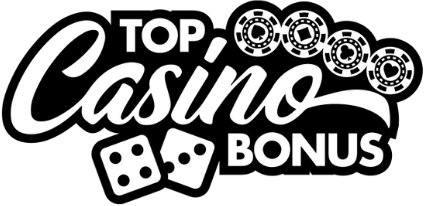How to play Texas Hold’em: a comprehensive guide
Texas Hold’em isn’t just a card game, it’s a living, breathing chess match played with chips and grit. The roots run deep, from dusty backroom tables to well-lit casino floors and sophisticated online platforms. But here’s the thing, too many newcomers think it’s about flashy bluffs and gut feelings. Nonsense. It’s about precision, pattern recognition, and discipline. They chase pots like dogs chasing parked cars. I’ve seen it for decades, the ones who succeed respect the fundamentals. And if you want to learn how to play Texas Hold’em the right way, start by respecting the structure.
Table of contents
Understanding the basic rules and structure
The game starts with two players posting blinds, the small blind and big blind. The dealer position rotates clockwise each hand. Once blinds are posted, each player is dealt two private cards (hole cards). These are sacred, treat them like state secrets. It’s what you do with them that shapes the game.
The betting rounds
Texas Hold’em unfolds in four acts: pre-flop, flop, turn, and river. After hole cards are dealt, there’s a round of betting. Then, three community cards, the flop, are placed face-up. This is followed by another round of betting. The turn reveals a fourth card, another bet. Then comes the river, and the final betting round. If there’s more than one player left, we go to showdown.
You make your best five-card hand using any combination of your hole cards and the five community cards. Don’t just guess what’s strong, study the poker hand rankings and know them cold. Anyone guessing during a showdown is flying blind.
Knowing when to bet, fold, call or raise
This is where greenhorns light their stacks on fire. Every decision in Hold’em sits on those four pillars. Betting means you think you’ve got the edge. Folding? That’s your shield, don’t be afraid to use it. Calling keeps you in the hand, and raising applies pressure. Don’t just copy what the pros do on TV; understand why they do it.
Reading the table
A big lesson from my early days: don’t play your cards, play their cards. Watch body language in live games, bet timings online, and stack sizes across the board. Learn to sniff out weakness, when someone’s just calling down the line, they’re usually hoping, not planning. Conversely, a strong line from the blinds can mean real power… or a trap.
The psychology and timing behind winning moves
I always say poker isn’t about raw aggression, it’s about controlled fire. Bluffing, for example, isn’t just acting strong. A bluff must tell a story, one that makes sense. A rookie fires random bets like throwing darts in the dark. But the seasoned player understands ranges, position, and the story their actions have been building all hand long.
When the cards don’t matter
Ever win a huge pot with 7-2 offsuit? I have, because the opponent crumbled under pressure. A well-timed semi-bluff with a draw can force folds from better hands. But here’s the kicker, you’ve got to know when NOT to bluff. I see aspiring players go fancy against calling stations. Wrong move. Never try to convince a mule to dance, you’ll just hurt your foot.
Crafting strategy based on position
Beginner mistake number one? Ignoring position. Acting last in a round gives you critical information. Early position? Play tight. Late position? That’s where the magic happens. You see their moves before deciding, giving you leverage. You wouldn’t build a house from the roof down, why construct a hand without foundation?
Adapting your play style
Don’t cling to one style. Tight-aggressive, loose-aggressive, trapper, each has its place. At a full ring table, you might fold for an hour before making a strike. In short-handed games, you pivot fast. Just like in Baccarat and Punto Banco, where pattern observation can guide betting strategy, Hold’em too requires adaptability born of deep understanding, not guesswork.
Bankroll management and table selection
I’ve watched too many hopefuls bust out because they mismanaged their chips, foolishly diving into waters too deep. Begin with stakes that allow at least 20–30 full buy-ins for cash games. Don’t measure your skill by the size of your stack, measure it by how long you can stay in the game.
Pay attention to the banking options
If you’re playing online, your success also depends on how you manage deposits and withdrawals. Knowing efficient banking methods minimizes friction. For those who prefer traditional ways, opt for bank and wire transfers. They’re slower but trustworthy, especially for high-stakes players who value security over speed.
Building discipline and mitigating risk
Discipline separates the fish from the shark. You’ll get bad beats. You’ll have cold cards. It’s what you do next that defines your edge. Don’t chase losses. Don’t tilt. Don’t try to recoup in one hand. Playing responsibly is a lifelong commitment, not just a warning on a pop-up screen. Learn from the principles of responsible gambling and treat the game with reverence, not dependency.
Keep your ego out of the game
No one cares if you won a big hand last night. What matters is how you play the next one. One of the best players I knew always left the table after a big win. Why? Discipline. Never confuse luck with skill. In the short run, anyone can win. In the long haul, only fundamentals carry you.
Closing thoughts on mastering the game
Texas Hold’em is more than five community cards and betting rounds. It’s a masterclass in patience, risk assessment, and human behavior wrapped in green felt. The greats didn’t get there through shortcuts or one-time wins, they put in the work, hand by hand, mistake by mistake.
Learn when to strike and when to step off. Respect the rhythm of the game, play within your limits, and never stop absorbing the nuances. What separates a card player from a Hold’em master is not just knowledge, but wisdom earned in countless hands, both won and lost. So sit down, ante up, and play like you’ve got a purpose. You’re not chasing luck. You’re building legend.





0 Comments